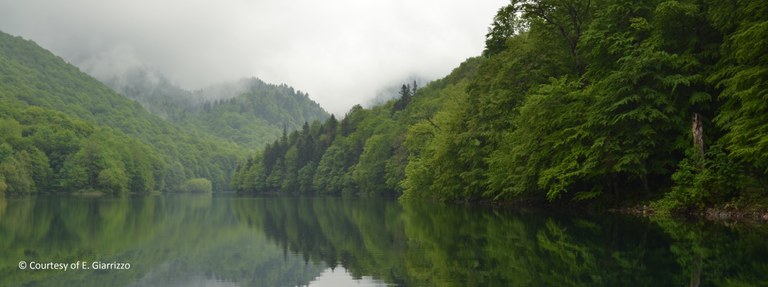FORESTS and CO - Co-Benefits and Conflicts between CO2 sequestration and biodiversity conservation in European Forests

A new project, funded by the EU under the Marie Sklodowska-Curie Programme, and entitled ‘Co-Benefits and Conflicts between CO2 sequestration and biodiversity conservation in European Forests’ (FORESTS and CO) started with a kick-off meeting in October 2015. The project is carried out by Dr. Francesco Maria Sabatini and Prof. Tobias Kuemmerle with the partnership of the European Forest Institute.
FORESTS and CO will test whether policies designed to protect either biodiversity or carbon in Europe’s temperate forests are synergistic or conflicting. Indeed, forests harbor large amounts of carbon and unique biodiversity, suggesting that protecting forests may benefit climate change mitigation and biodiversity conservation alike. Yet, forests also provide other essential services, from timber to energy to recreation. Balancing these multiple, sometimes conflicting, objective when managing forests requires understanding trade-offs and synergies among them.
Three work packages (WP) will focus on both unmanaged, old-growth forests, representing a baseline for key ecosystem functions, and managed forest, constituting the majority of Europe’s forests.
This action will provide new insight into the synergies and trade-offs between carbon and biodiversity in forests and develop methods to map these trade-offs. From a policy perspective, FORESTS and CO will help to tailor forest management options to jointly foster carbon and biodiversity, thereby contributing to key policy goals on curbing climate change and biodiversity loss.
Further information on FORESTS and CO:
Project Blog: https://forestsandco.wordpress.com/
Funding and support:
FORESTS and CO has received funding from the European Union’s Horizon 2020 research and innovation programme under the Marie Sklodowska-Curie grant agreement No 658876.
FORESTS and CO receives the support of the European Forest Institute (EFI) under the Programme ‘Sustainability and Climate Change’, the Vegetation Science Group of Masaryk University (Brno, CZ), and the Rubenstein School of Environment and Natural Resources (University of Vermont, USA).

